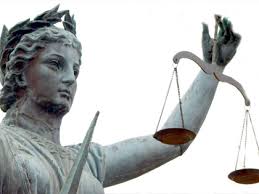Lawmaking: How A Law Is Made
 Lawmaking: How A Law Is Made
Lawmaking: How A Law Is Made
- Dr. Michelle Beshears
Let’s briefly touch on the basics as to how a law is made.
There you have it the basics as to how laws are made by the legislative body. However, there is a bit more to think about. The most important function of legislative bodies is to make law. The textbook mentions that the legislative plan typically goes through six stages: instigation and publicizing of a particular problem, information gathering, the formulation of a specific legislative remedy, interests-aggregation, or gathering support for the legislation, mobilization, and modification.
The reality is there is no question that the most important function of legislative bodies is to make law. What then influences the lawmaking process? The answer is both simple and complicated. The simple answer is society. Society influences the lawmaking process. However, a society is seldom in agreement on every issue that a law may affect. One need only look at laws in the United States pertaining to prohibition, anti-abortion, civil rights, legalization of marijuana, and the legalization of same-sex marriage to name a few. The influence on laws pertaining to these issues and others throughout American history were influenced by public opinion, interest groups, and various social movements.
Let’s take a look at the civil rights movement in the 1960s for example and its influences on the law in this video.
The civil rights movement is directly responsible for laws pertaining to civil rights in the United States. Title VII of the Civil Rights Act of 1964 is the area of the law that addresses racism and sexism. It is the first federal legislative action taken to prohibit discrimination in employment based on race, color, religion or national origin.
However, another issue is money and politics and how these influence political elections. As well as, influence lawmaking. Before moving forward, let’s first learn about the difference between so-called Hard Money and Soft Money in this short video about Buckley v. Valeo.
Excellent! As you should now know the difference between soft and hard money. It is now time for a quick video rundown of legal decisions dealing with campaign donations and the influence of election outcomes. In this video, you shall hear a couple of terms, which I want to explain. The first term is the acronym PAC, which stands for Political Action Committee. PACs are committees usually sponsored by or representing interest groups, Unions, or business wishing to influence the outcome of an election to further their own cause or agenda. The next term is pluralism.
The U.S. Supreme Court (2010) Citizens United v. Federal Election Commission (5-4) decision is said to have opened the door to unlimited sums of money on being spent by corporations and unions on independent political activity. This was acknowledged in the recent 2015 Fox News Republican debate. The Citizens United case by name was not mentioned, but some submit the truth about it was exposed. Here is the video clip.
In closing, hopefully, you have gained some additional knowledge not covered in the book from this lesson.

Dr. Beshears has earned two baccalaureate degrees one in social psychology and another in criminal justice. She also has two graduate degrees one in human resource development and another in criminology from Indiana State University. She has also earned her Ph.D. in Business Administration with a specialization in Criminal Justice from Northcentral University. Dr. Beshears served in the U.S. Army for 11 years. She obtained the rank of Staff Sergeant prior to attending Officer Candidate School at Fort Benning, Georgia where she earned her commission. As a commissioned officer. Dr. Beshears has led numerous criminal investigations and worked with several external agencies as well. As a civilian, she has worked with the local sheriff’s department, state drug task force and FBI. Dr. Beshears resides with her husband Dr. Michael Beshears, their son Hunter, and daughter Malia near Norfork and Bull Shoals Lakes, in Clarkridge, Arkansas. She also has three beautiful grown stepdaughters, Michele, Cora, and Mollye.
Peer-reviewed Publications include:
Beshears, M. L., Beshears, M. L., Weiss, D., & Crocker, C. D. (2017). Sex Offender Community Notification Law Reform: A Call for More Active, Consistent, and Detailed Information about High-Risk Offenders. International Journal of Social Science Studies, 5(5), 71-78.
Beshears, M. (2016). Neighbors of registered sex offenders: A qualitative analysis of their lived experiences. International Journal of Law, Crime, and Justice, 48, 40-49.
Beshears, M. (2015). Evaluating Lived Experiences of Those Living Next to or Near Sex Offenders (pp. 116). ProQuest Dissertation Publishing.
Presentations Include:
Presented at the 2018 Convention of the Academy of Criminal Justice Sciences on February 17, 2018, in New Orleans, Louisiana; entitled, Social Media Use: A Tool for Solving Crimes and Building Community Relations. Co-presenters were criminal justice professors, Dr. Mike Beshears, and Dr. Mark Bond.
Presented at the 2017 Convention of the Academy of Criminal Justice Sciences on March 24, 2017, in Kansas City, Missouri, entitled, Sex Offender Community Notification Law Reform: A Call for More Active, Consistent, and Detailed Information About High-Risk Offenders.
Presented at Oxford University, London (video conference). Topic – Black Lives Matter: Social Justice 2.0 September 26, 2017. The lecture was live-streamed to graduate students in the sociology program and their professor. Co-presenters were criminal justice professors, Dr. Michael Beshears, Dr. Mark Bond, and Nicole Cain (Ph.D. c).
Beshears, M.L., & Beshears, M.L., (May 7, 2014). Sloan C Discussion. “Briefing of 7th Annual Emerging Technologies for Online Learning International Symposium,” APUS, Adobe Connect – Phone and Online.

subscribe for free